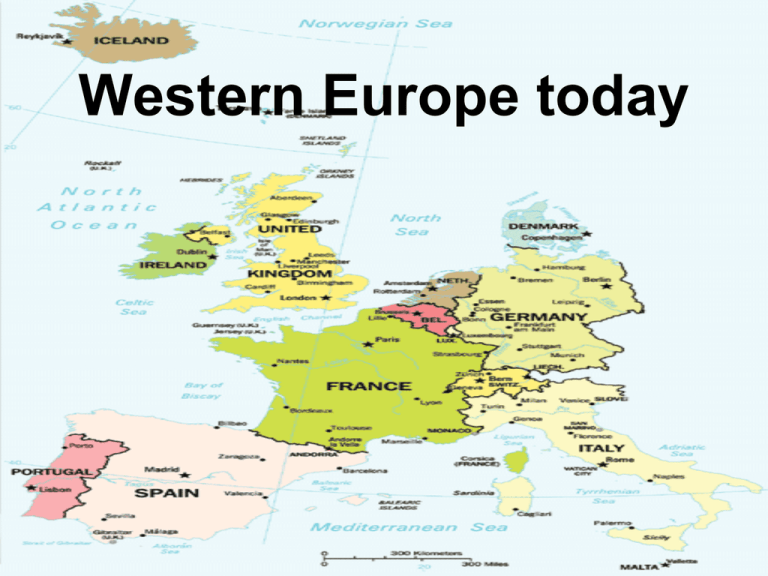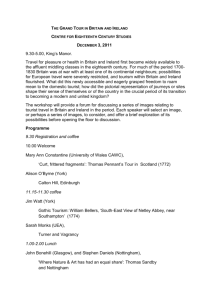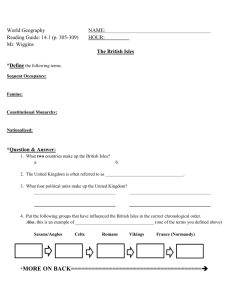Western Europe today-Great Britain and Ireland_1
advertisement

Western Europe today Great Britain and Ireland The United Kingdom includes: • • • • England Scotland Wales Northern Ireland Each country has its own history and culture but are ruled by the same government. ** Official name: United Kingdom of Great Britain and Northern Ireland ** Often referred to as Britain or Great Britain A Democratic History The United Kingdom’s government is a constitutional monarchy headed by a king or queen. During the middle ages, British kings couldn’t make actions without the approval or rich nobles. The nobles’ power grew over time, and in 1215 the British monarch, King John, was forced to sign the Magna Carta. The Magna Carta strengthened the power of the nobles and limited the power of the king. Parliament Over time the group of nobles became known as Parliament. They continued to gain power and make decisions about what taxes citizens would pay. They elected representatives from the country to be in Parliament. Over time, citizens elected the representatives. Limited Power Queen Elizabeth II was crowned in 1953, but has limited power. She may approve or reject laws passed by Parliament, but does not have the power to make laws or collect taxes because Britain is a constitutional monarchy. A constitution is a set of laws describes how govt. works. In a constitutional monarchy, British laws are made by Parliament, not by Kings or Queens. Ireland - One Island, Two Nations Ireland was originally divided into small settlements controlled at different times by Irish chiefs, Catholic bishops, Viking invaders, Norman conquerors, and British planters. There was no unified central government making these settlements easy prey. At the same time scattered settlements make it hard for an outside force to take complete control over the island. King Henry VIII Declared himself King of Ireland and head of the Church of England in 1541 as a means to break away from the Pope and the Roman Catholic church. The colonization of Ireland by the English began. Religious Conflict Because of their religious belief in the Roman Catholic church, Catholics in Ireland were often persecuted, or mistreated, by the government and the settlers sent over from England to establish plantations. They were driven from their land and fought back demanding equal rights, political independence, and religious freedom. In 1801, England passed the Act of Union, joining Ireland to England. Political conflict Home Rule (Irish govt. that would govern Irish affairs) efforts were opposed by Protestant land owners who held the majority and didn’t want to break away from the Great Britain. Cutting ties to the British Parliament was not in their best interest because, in a unified Irish nation, they would be outnumbered and voted out of power. The movement led to peaceful opposition, political force, and war. In 1922, a treaty was signed that said Northern Ireland, where the Protestants held power, would remain part of Great Britain. It granted independence to most of the rest of Ireland, which became the Irish Republic in 1949. In 1998, the Good Friday Agreement was approved in Northern Ireland in the Irish Republic. It gave Catholics in Northern Ireland a stronger voice in their government but did not cut their ties to Britain







